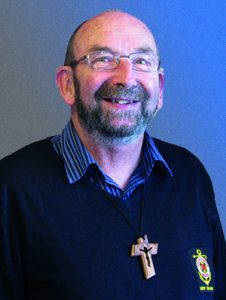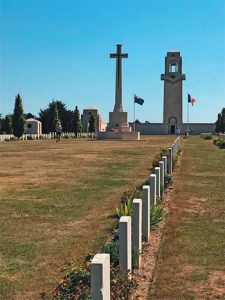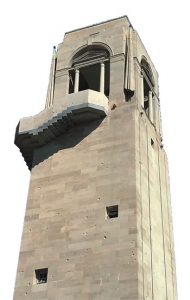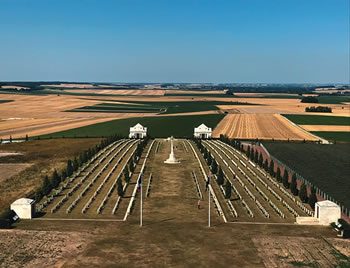Remembering our Dead

Fr Kevin Head sm
During November we pray especially for those who have died -- friends, family members, fellow parishioners and even people we never met, believing that it is an act of love to pray for them. Since they now live outside time, in eternity, our prayers are of benefit to them at the very moment of their entering eternity, at the moment they died.
This month we also remember that the First World War ended one hundred years ago on 11 November. The war involved 70 million military personnel. Nine million of these were killed, along with seven million civilians, including the victims of a number of genocides. It was called ‘the war to end all wars’; as such, it was ill-named, in that issues that were not dealt with properly and justly at the end of it contributed to the beginning of the Second World War not much more than twenty years later.

Villers-Bretonneux Memorial Cemetery and Australian National Memorial, Somme district, France.
Photos: Fr Kevin Head SM
In New Zealand and Australia, as well as almost everywhere else in the world, there was hardly a family that was not affected, and the horrific statistics of death, injury and trauma are still mind-boggling. Excluding those in other countries’ armed forces, 100,444 New Zealand troops and nurses served overseas, about 10% of the population of just over a million at the time. The casualty rate was 58 percent: 16,697 killed and 41,317 wounded. 507 died during training in NZ between 1914 and 1918, and within five years of the end of the war, about a thousand former service personnel died as a result of the injuries they had suffered. 1
The situation for the Australian armed forces was similar. 308,000 men of those who joined up served in a theatre of war, roughly 6% of the population of fewer than five million. It is estimated2 that 62,300 died and 208,000 were admitted to hospital after being wounded, a casualty rate of 62%. 30% of these admissions, more than 62,000, were because of shell shock. Of those who were killed in France, 11,000 have no known grave.
The cover of this month’s Messenger is a photo taken in the Villers-Bretonneux cemetery and war memorial in northern France. The memorial carries the names of more than 10,000 Australian and allied soldiers who were killed on the battlefields of the Somme. Among those whose names are recorded in stone and who have no known grave is my grandfather’s brother, Joseph Arthur Head.

The tower at Villers-Bretonneux
Joe came from a small town, Kaniere, on the West Coast of the South Island, belonged to the Church of England, was a printer by trade, and had gone to Australia to work on his uncle’s farm at Byrneside, Victoria, which is how he came to join the Australian army. He arrived in France in June 1916, part of the 9th reinforcements of the 23rd Battalion, and was killed three months later at Pozières on 22 August. The official account states that he was ‘struck in the head with a piece of shrapnel and killed instantly’. He was buried where he fell on the ridge in front of Pozières. The only personal effect that was returned to his family was a New Testament.

View from the tower
Stories like this, of course, can be repeated millions of times over for the millions who have died in war. Those who died were members of families to whom they were precious, who loved them and wept for them, and kept their memory alive down the years. And each and every one who died is infinitely precious to God, and loved without limit. We owe them not only the debt of our remembering them, but also the debt of our prayers, that they rest in peace, in God’s love.
1 Statistics from Wikipedia
2 David Noonan, Sydney Morning Herald, 30 April 2014
 Entries(RSS)
Entries(RSS)